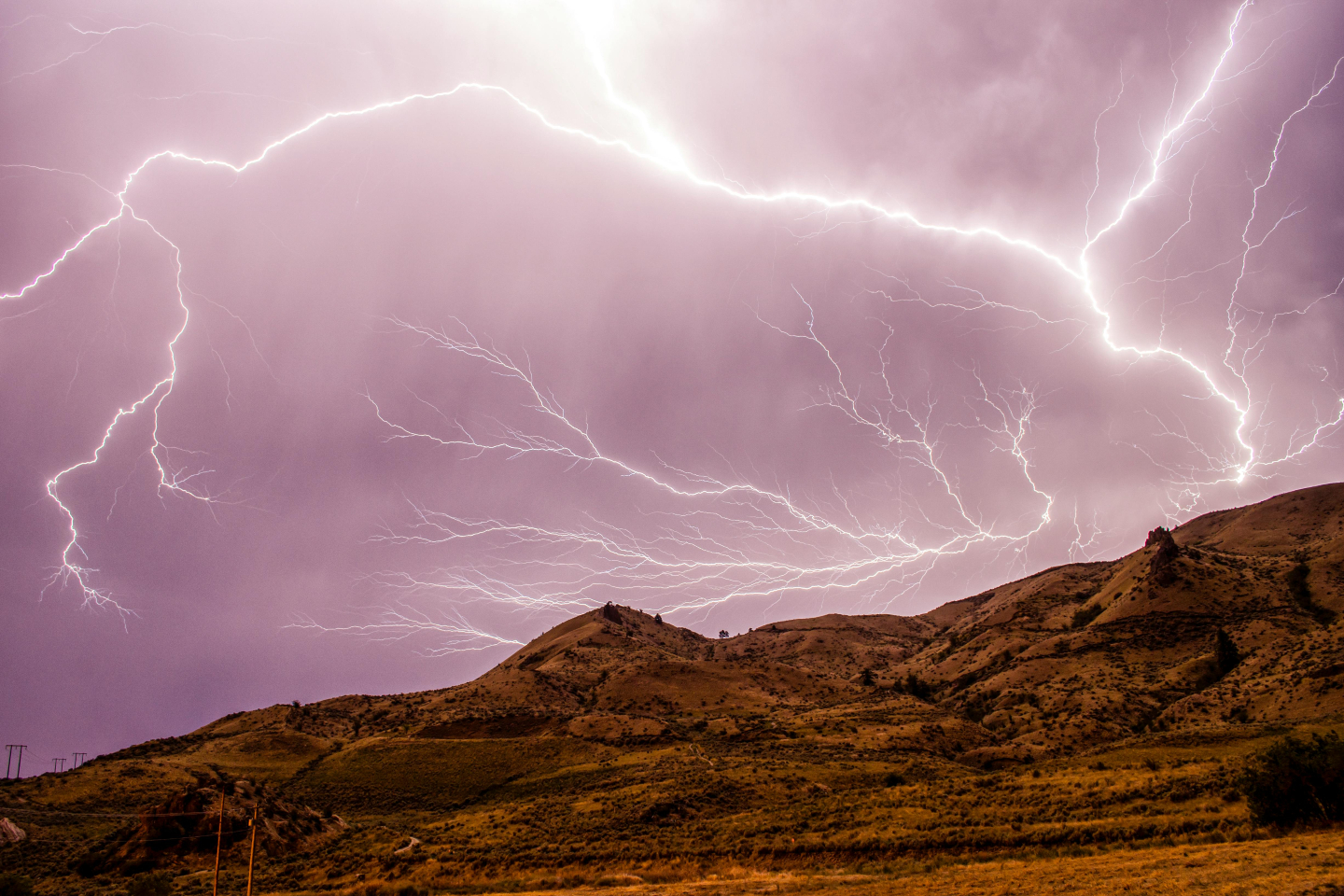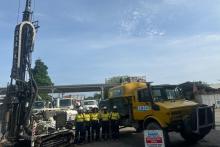A world-first survey using the effects of lightning strikes to test electrical conductivity in rocks at Estrella Resources’ Carr Boyd project in WA has earned the company a Federal Government grant. The cutting-edge heliborne survey initially conducted by Expert Geophysics in August last year, harnesses traditional electromagnetic pulse data in conjunction with lightning strike pulses triggered by storms constantly raging over the Equator.

A world-first survey using the effects of lightning strikes to test electrical conductivity in rocks at Estrella Resources’ Carr Boyd project in Western Australia’s Goldfields region has earned the company a Federal Government grant.
The cutting-edge heliborne survey initially conducted by Expert Geophysics in August last year, harnesses traditional electromagnetic (EM) pulse data in conjunction with lightning strike pulses triggered by storms constantly raging over the Equator.
The resulting hybrid data can uncover highly-resistive electrical conductors at previously unheard-of depths of more than 600m below the surface, such as the nickel-copper sulphides being targeted by Estrella at its Carr Boyd project, 80km north of Kalgoorlie.
The company says it has received $143,000 from Radium Capital as an advance on its expected research-and-development (R&D) rebate for its world-first survey. The advanced payment represents early access for Estrella to just a portion of its projected R&D payment.
Management says it will direct the advanced funds, alongside a portion of the anticipated full incentive payment that is due in December, towards continued exploration of the expanding mineralisation at Carr Boyd.
The geophysical technique successfully measured electrical resistivity differences in the rocks at Carr Boyd and accurately confirmed the project’s existing high-grade sulphide mineralisation, mapping nickel-sulphide units to depths of more than 500m.
The data has also delineated the nearby Colreavy Komatiite unit and multiple EM conductor targets. Komatiite is a known host rock for high-grade nickel-sulphide mineralisation, which was first discovered at the Kambalda Dome just 130km away.
With nickel sulphides struggling to gain traction in a depressed nickel market, Estrella has also added its newest flagship Lautém project in virgin Timor-Leste. The 500-square-kilometre project has been recently confirmed to contain rich outcropping manganese for more than 700m intervals through some 27km of strike.
googletag.cmd.push(function() { googletag.display('bn-dfp-article-lb2-advert'); });Management acquired for the project in conjunction with its State-run joint venture (JV) partner, Murak Rai Timor (MRT) – the new and improved mining arm for the Timor-Leste Government. It says the outcropping, high-grade manganese is embedded within thin chert horizons, which is typical of the style of mineralisation that occurs on volcanic islands in general.
Timor-Leste is renowned for hot larva fluids that flowed onto the seabed before being pushed and lifted above sea level. The result of those ancient crustal activities is a highly-active geological zone that is world-renowned for its base metals and precious metals deposits.
Recent assays by Estrella confirm the presence of high-grade manganese across multiple prospects at Lautém. Management believes a high correlation between assays and pXRF scanning technology arms it with the confidence to deliver multiple high-grade manganese targets, which could fast-track exploration works at the virgin Lautém project.
It appears as though Estrella is keen to harness all of the latest cutting-edge exploration technologies across both its Australian and Timor-Leste assets. And much intrigue is likely to surround the follow-up drill-testing on its world-first lightning strike survey targets.
Is your ASX-listed company doing something interesting? Contact: matt.birney@businessnews.com.au
















